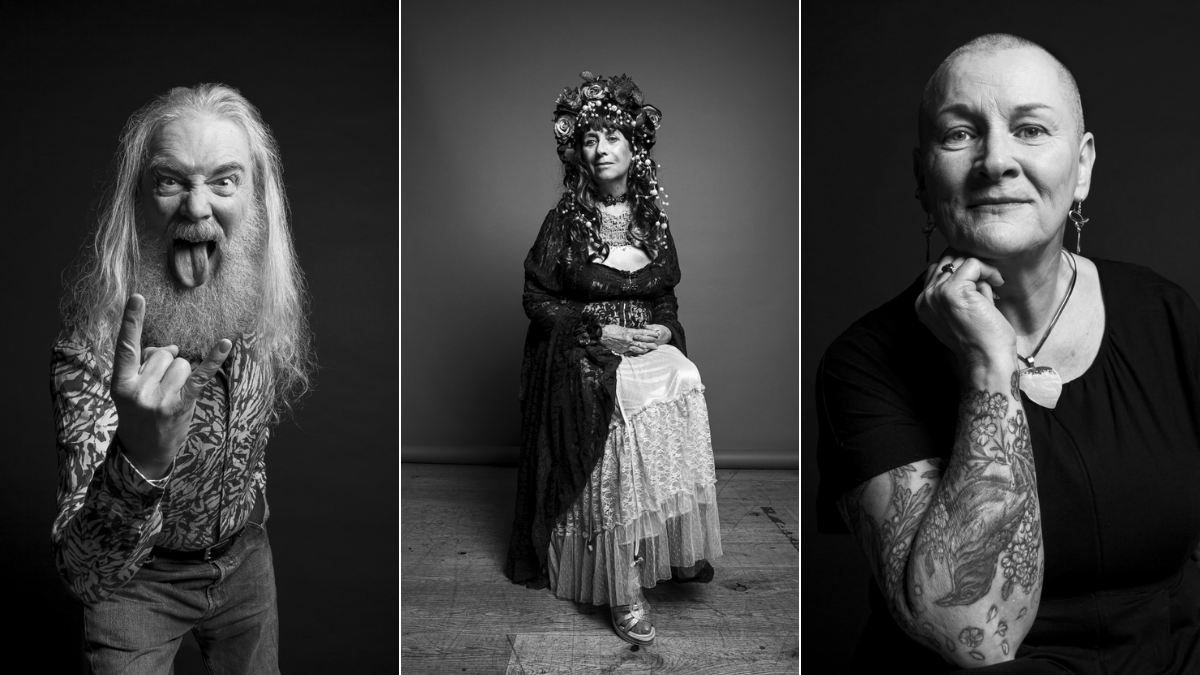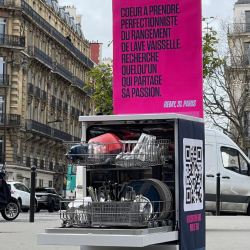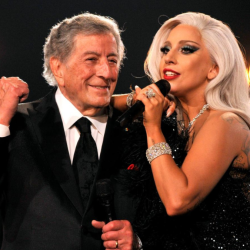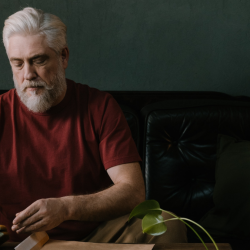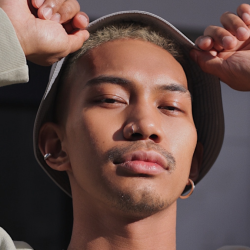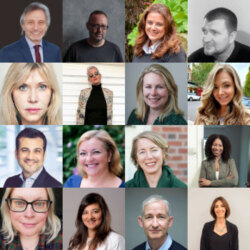MediaCat Magazine recently joined MullenLowe’s event This Is What Over 50 Looks Like, which aimed to stamp out ageism in advertising for good. The event also included a private viewing of a photographic exhibition by blind photographer, Ian Treherne, who has captured shots of what it looks like to be someone over 50 in the UK right now. To get a better understanding of the opportunities for the creative industries to change the narrative around older generations our Content Editor, Andrea Buzzi, spoke to MullenLowe’s Chief Strategy Officer, Ayesha Walawalkar.
Hi Ayesha, thanks for talking to us. So what does over 50 look like, both for you and the industry, as you see it? And why are we talking about this ‘Age of Invisibility’?
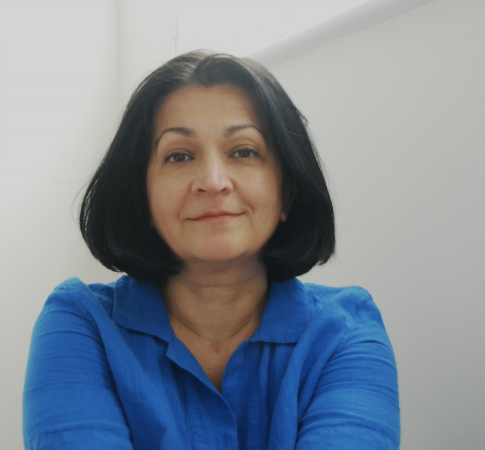
It’s a pleasure, Andrea. When we talk about the Age of Invisibility and why we called our project the Invisible Powerhouse, we need to consider important statistics that brought this whole thing to life. We’ve been on this journey now for 18 months, and one of the things that sparked it was the Channel 4 Mirror On The Industry research, which examines what advertising in our country looks like in terms of diversity and representation. We are an ageing population in the UK: 47% — nearly half of the adult population — is over the age of 50. They control most of the wealth in this country, and within the next 10 or 15 years they’re going to increase in importance. By 2040 they’ll be spending 63 pence out of every pound that gets spent in the UK, and they’ll be the biggest spenders in every category, from technology to cosmetics to cars.
So, when the research said only 12% of advertising in the UK features someone over the age of 50 in a leading role, we realised that’s a real alarm bell. They are a powerhouse, demographically and financially. They drive so much of what’s happening to the British economy, and yet they’re completely invisible in terms of advertising and marketing. We also started to look at what that 12% of advertising looked like, and we realized that advertising that really features an older person in a leading role is usually for a product that is exclusively for much older people. You see ads related to mobility aids, funeral plans, equity release.
How do I feel when I see myself — somebody in their 60s or 70s and very active, possibly doing a part-time job or in a second career, travelling, still looking after different members of the family — represented only in that way? It would make me feel at best ignored, passed over, irrelevant, and at worst really depressed about the way people see me as a human being. That is what inspired the project in the first place. We had to do something about it.
Could you tell us more about the Invisible Powerhouse project?
We kicked off with a big research project last year. We realised that looking at half of the adult population as one homogenous group made no sense. The difference between someone who’s 55 and someone who’s 85, is the same as the difference between a 55 year old and someone who is 25. This is a very big span of time and experience, but we just talk about the over 50s as if they’re all bundled together. We needed to do more ‘segmentation’ to better understand this group, so the project began with quantitative and qualitative research to better understand the spectrum and the diversity of people within this very wide age group.
The second stage is to find positive ways of representing people over 50. It’s easy to say that things need to change, but how can we change the narrative, until people begin to realize how diverse and vibrant older adults are? The average person who shops in Boots or Sainsbury’s is in their 50s, so we need to stop thinking about over 55s as people who are permanently on a cruise. These are the guys who are buying cars nowadays. Why are we not seeing them? Older adults don’t necessarily want to wear a T-shirt that says ‘70 and proud’, they just want to be normalized in communication, and to see positive representations of people like themselves.
How are over 50s misrepresented by the creative industry?
One of the organisations that we’ve worked with, the Centre for Ageing Better, pointed out that there are two tropes in advertising featuring older people: the first shows them as being very frail. If you’re an older person, the suggestion is that you struggle going upstairs and you’re in need of a mobility scooter. The second trope shows people in their 90s carrying a surfboard, jogging up the beach, and they’re basically superhumans. There’s nothing in between.
It is crazy if one, for instance, thinks about what’s happening with the film industry. Several of the stars playing the lead in big movies are older now: they are in their 50s or 60s or more and they are commanding a mainstream audience. We’re talking about people who are theoretically considered in their midlife or even ‘retirement’ phase; who are doing all the things that you might historically associate with somebody who is perhaps in their 30s. They’re active, very much engaged in the world of work, and still playing a very integrated part in society, leading things.
Also, we need to pay more attention to women, because if we see any older people positively portrayed in advertising it’s more likely to be older men, as they’re more likely to be seen in positions of power. Actually, women live longer and stay active longer than men, so you can see that there is a whole bunch of things that we need to change.
Apparently, being old is something to avoid. Have you ever felt diminished or invisible?
Yeah, to all of those, absolutely! There is a view that as you age, you take longer to learn new things, especially related to technology. There is the assumption you’re not going to be able to understand or keep up with trends in everything from the metaverse to social media to A.I. They may be truth in that: but I still keep trying, and learning. And that’s the key.
Also, I recognised myself in another survey that was done by Mumsnet and Gransnet. They presented to their respondents a simple question in order to measure how visible they are: ‘How long does it take you to get served in a bar or a restaurant — and does that change as you age?‘ Again, the answer to ‘Does it change’ was a resounding yes. Women in their mid 40s to 50s notice the change most dramatically, as they suddenly need to jump up and down and shout and wave their credit cards just in order to be served! It does happen to men as well, but about 10 years later.
We live in a society in which we start to become invisible at around the same time as we begin to experience menopause. But that’s often the age at which women move into senior positions: so at the peak of our careers we suddenly become less visible. We basically have to learn to shout louder. These are not necessarily conscious biases that we’re facing, but we need to train ourselves to stop and look and realise this person may be female and older, but that does not mean she has nothing to say.
Boomers vs Zoomers: how do you feel about the youngest generation? Do you think it’s possible to work effectively together, or the gap is too wide?
Here’s another big thing that struck us very early on. One of my major clients core business is household goods. What I know is that the group in this country who are really helping support all of their green, environmentally friendly (and therefore more premium products) are all aged 50+. The person who started Extinction Rebellion in this country was aged 57. And when you see all those activists out there gluing themselves to the road, many of them are older.
What was brilliant about the interviews that we did amongst older adults was we realized you cannot talk about all boomers the same way. Yes, some have pretty negative views about Gen Z. They think that they’re rude and violent and they have real problems understanding and accepting the difference in attitudes towards things like gender. But others are extremely supportive of Gen Z, and see them as being massively environmentally conscious, liberal, open-minded, and tolerant. They are open to the way that gender is seen differently. Some of the older people that we spoke to had more in common with people in their 20s than they had with other people in their 70s. I think we need to start thinking about people in terms of their motivations and behaviours. If you’re looking at people who are progressive and liberal, you find loads of them in the older age group as well as well as the younger.
Recently we’ve seen events aimed at increasing sensitivity about ageism — see the ‘Forever Love’ campaign by Tom Ford and the Michelle Yeoh speech at the Oscars night 2023. Do you think things are getting better? What should we really do?
For years Lancôme had Isabella Rossellini as its muse. When she hit 43 they dropped her. They decided she was too old to be the face of the brand. Now Lancôme has a female CEO they’ve brought Isabella back again. At 70 she’s someone who has aged beautifully, without pretending to be anything that she is not. What I find really intriguing is that this is a premium brand that can appeal to a wide spectrum of people, and to show us what modern beauty looks like, they’re doing campaigns with two women: one of 70 (Isabella) and one of 37 (Amanda Seyfried). I think that’s a very inclusive way of doing beauty, and I’d love to see more brands doing that.
I think things are starting to change, but I think we need to accelerate the process. If we aren’t positively acting then we’re reinforcing those unconscious biases we were talking about. At MullenLowe, we recently staged a photographic exhibition with beautiful shots of fascinating, diverse, lively people aged between 55 and 90. Next, we’ll be taking our exhibition on tour. It’s essential we get out there with positive imagery to show people how great being over 50 can be.
Featured image: This is what over 50 looks like exhibition / MullenLowe




















